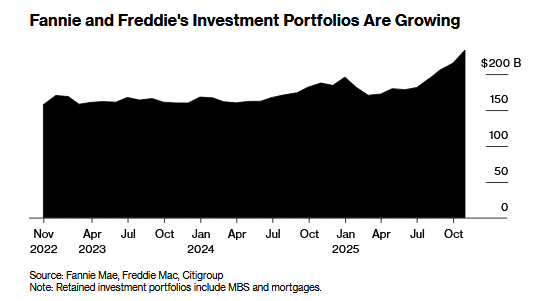Overview: It is a new day, but with the continued rise in interest rates and weaker equities, it feels like yesterday. Only China and Hong Kong among the major markets in Asia Pacific resisted the pull lower. Europe’s Stoxx 600 is off by more than 0.5% led by health care and real estate. It is the fourth loss in five sessions and brings the benchmark to its lowest level since March 18. US futures are flattish. Yesterday, the NASDAQ fell by more than 2% for the third session in the past five. The US 2- and 10-year yields are firm at 2.52% and 2.79%, respectively. European benchmark 10-year rates are up 1-2p. The 10-year JGB yield is drawing closer to the 0.25% cap. The greenback continues to draw support from the higher rates. Today, the Australian and New Zealand dollars are resisting. The Swiss franc and Canadian dollar are the weakest. Among emerging markets, the Mexican peso is faring best, up around 0.4%. Gold is firm and straddling yesterday’s $1953.50 close. June WTI is jumping back after falling to $92.60 yesterday, its lowest level since March 17, to recoup most of yesterday’s nearly 4% decline. Europe may be moving toward a ban on Russian oil imports, but a decision is not likely until next month at the earliest and may phase it in over several months. US natgas is rising another 1.2% after surging 5.8% yesterday. It was the third session in five that it rose more than 5%. Europe’s natgas benchmark is snapping a three-day drop (~-5.6%) and recouping 1.25%. Iron ore is up 2.5%, its first gain in six sessions. May copper is recovering about half of yesterday’s 1.9% decline. July wheat is rising for a third session. It is up almost 3% after rising more than 6% over the past two sessions.
Asia Pacific
Despite the economic costs, Beijing is maintaining its zero-Covid policy. The disruption is weighing on metals and oil prices. However, the economic squeeze may encourage officials to ease efforts to restructure other parts of the economy. This may have been behind the decision to approve the first new video games since last July. China’s National Press and Publication Administration published a list of 45 new titles on its website late yesterday. Recall that last August, Chinese regulators introduced measures to cap the playing time for minors.
China’s Huawei has reportedly furloughed its Russian staff for at least the next month. It suspended new orders. It wants to avoid secondary sanctions from the US. Similarly, Ericsson made a similar decision, suspending its business and putting its local employees on paid leave. While there may be attempts to find a workaround, these kind of actions illustrate the power of the threat of secondary sanctions and will have impact over time. At first, inventories will be drawn down, but in a few months, the shortages will become more apparent.
Japan’s Finance Minister Suzuki stepped up his warning about yen weakness, saying that officials are closely monitoring the foreign exchange market, “including the recent depreciation of the yen with a sense of vigilance.” It produced a small pullback in the dollar, which remains firm, though just shy of the 2015 high (~JPY125.85). With today’s move, the greenback has extended its rally for the eighth consecutive session. A convincing break of that old high, and the next important chart area is around JPY130. The Australian dollar found support at $0.7400 and is posting minor gains for the first time since last Tuesday. Still, the upticks look vulnerable and may not be sustained after running into offers near $0.7440. A break of the $0.7400 area could spur another leg down toward $0.7320. Note that there is an option at $0.7400 for about A$726 mln that expires today. The US dollar is little changed against the Chinese yuan near CNY6.3700. It has been confined to yesterday’s ranges in quiet turnover. The PBOC set the dollar’s reference rate at CNY6.3795. The median projection (Bloomberg survey) was for CNY6.3775.
Europe
The UK employment data were mixed. Jobless claims fell 47k in March after a revised 58k decline in February (initially -48k), and the ILO measure of unemployment slipped to 3.8% from 3.9%. Average weekly earnings rose as expected 5.4% (from 4.8%) in the three-months year-over-year measure including bonus payments, and 4.0% (from 3.8%) without. However, job growth itself disappointed. Payrolls gained 35k employees. The median forecast from the Bloomberg survey called for a gain of 125k. Moreover, the 275k increase reported in February was cut to 174k. The employment change (3-month-over-three months) was expected to be 52k in February but instead was a modest 10k. A month ago, the swaps market was pricing in more than a 50 bp hike next month. It is now less than a 15% chance of a 50 bp move. That is ahead of tomorrow’s March CPI figures. CPIH, which includes homeowner costs, is expected to have accelerated toward 5.9% from 5.5%.
Germany’s ZEW investor survey was poor, but not quite as bad as the median guesstimates in Bloomberg’s survey. The assessment of the current situation deteriorated to -30.8 from -31.4. It is the weakest since last May. The deterioration pre-dates Russia’s invasion of Ukraine. The expectations component also weakened, slipping to -41.0. Here is where the war has taken a clear toll. It collapsed from 54.3 in February to -39.3 in March. The April reading is the lowest since March 2020 when the pandemic first struck.
It looks like the Swiss National Bank has been intervening again in the foreign exchange market. In the past two weeks, the domestic sight deposits have risen by 1.2%, the most in at least a year. The euro may have put in a double high last month near CHF1.04. The break of CHF1.02 neckline, and its inability to resurface above it yesterday looks ominous. The objective of the technical formation suggests another run at CHF1.000, which it briefly traded below in early March for the first time since early 2015, when the SNB lifted the cap on the franc. With a minus 75 bp policy rate and a 75 bp 10-year yield, buying the franc is expensive. Its strength against the euro seems to warn of downside risks for the euro and upside risks for European stress.
After sliding for seven consecutive sessions, the euro managed to post a small gain of a few hundredths of a cent yesterday. It completely unwound the short-covering gains on Macron’s slim victory in the first round. The euro is under pressure again. It slipped below $1.0860 and found some bids in late Asia/early European activity. Nearby resistance is seen around $1.0880. There are options for almost 870 mln euros at $1.09 that expire today and almost 1.35 bln euros that expire there tomorrow. For the third consecutive session, sterling is fraying $1.30 support. It has yet to close below it, but bounces seem to be getting smaller. A convincing break would bring our $1.2830 target into focus. It may not be today. Still, the $1.3020-$1.3040 area offers initial resistance.
America
The US reports March CPI today. No one in Bloomberg’s survey with 48 respondents expects the year-over-year pace to slow. The question is the magnitude of acceleration from February’s 7.9% pace. The range of forecasts is between 8.2% and 8.6%. The median and average converge in the middle near 8.4%. If the median is right in looking for a 1.2% month-over-month increase, it will be the first time since September 2005 that consumer prices increased by more than 1% in a month. The core rate is expected to rise by 0.5%. It has been rising by 0.5%-0.6% a month since last October. Given the strong increase in CPI in Q2 21 (cumulative 2.2%), some economists are suggesting inflation could peak with today’s report. It is possible, though if the median forecast in Bloomberg’s survey is fair, then CPI would have risen by a cumulative 2.6% in Q1 22. The core rate is a different story. It rose by a cumulative 2.4% in Q2 21 and with a 0.5% increase in March, it would have risen by a cumulative 1.6% in Q1 22. While there is headline risk, it is noise. The signal emanating from Fed officials is that monetary accommodation will be removed and that the Fed funds target is on its way to a neutral setting, for which the overwhelming majority see between 2.25% and 3.0%. The median dot is at 2.375%. The December Fed funds futures imply a year rate of a little more than 2.5%.
Mexico’s CPI is also accelerating. When it was reported last week, the March CPI rose to 7.45% year-over-year. It is the highest level in more than two decades. To be sure, under President AMLO, Mexico did not use fiscal policy to replace lost incomes during the heart of the pandemic like many countries, including the US did. Nevertheless, price pressures are acute. However, at the same time, the Mexican economy does not enjoy the strength of the US. Yesterday, Mexico reported that industrial output slumped 1% in February. The median forecast (Bloomberg) was looking for a 0.3% increase. The US reports March industrial production later this week. In the Jan-Feb period, it rose by almost a cumulative 2%. The newswire survey shows that the median expectation is for the Mexican economy to expand by 2.0% this year (the IMF’s forecast for 2.8% may be revised lower at the upcoming Spring meetings). Recall that the Mexican economy contracted by 0.2% in 2019 before the pandemic took another 8.2% of its output. It grew 4.8% last year. The swaps market has about 120 basis point of tightening by Banxico in the next three months and about 145 bp by the Federal Reserve. Despite the risk off mood, the jump in US rates, and the unexpected drop in industrial output, the Mexican peso strengthen yesterday to its best level in three days.
A few hours after the Reserve Bank of New Zealand hikes rates tomorrow, the Bank of Canada will follow suit. The odds of a 50 bp hike by the RBNZ has ticked up to about 75%. That warns that a 25 bp hike may be seen as disappointing and weigh on the New Zealand dollar. The swaps market had been split between a 50 bp and 75 bp hike by the Bank of Canada. However, as cooler heads prevail, the market has come back to 50 bp. The BoC is also expected to begin its balance sheet roll-off.
The Canadian dollar is extending its losses despite the widely expected hike. The US dollar continues to rebound off the year’s low set near CAD1.24 a week ago. It has retraced now over half of the losses seen since the March 15 high near CAD1.2870. It was found by CAD1.2635. The next retracement (61.8%) is closer to CAD1.2700. That may be too far today. The main driver seems to be the risk-off mood. Changes in the exchange rate are inversely correlated with changes in the S&P 500 (~0.75) by the most since last July. Many see the Canadian dollar as a petro-currency. The correlation of changes of the exchange rate and WTI is inverse by about 0.1. The greenback is extending its losses against the Mexican peso. It is trading at a five-day low around MXN19.85 in the European morning. The year’s low was set last Monday near MXN19.7275. There is little that stands in the way of a retest. There is little below it ahead of last week’s low by MXN19.55.
Full story here Are you the author? Previous post See more for Next postTags: #USD,Australia,Currency Movement,Featured,Germany,inflation,newsletter,U.K.


































